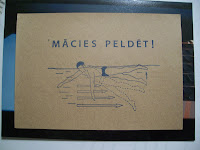
CanWe Swim a Landscape?
Prime thyself. Know the dances. They say that the word Butoh means dance-step, and has the air of a descending, stomping dance. Said Hijikata, “I would never jump or leave the ground; it is on the ground that I dance.” In flamenco, there is also a closeness to the ground which has parallels in southern India as well as in the motion pattern of the Japanese farmer. Dance is a current.
There is also a connection to surrealism, as most cephalopods are neutrally buoyant. Hijikata and Min Tanaka used Artaud’s recording of his “Pour en finir avec le jugement de Dieu” (To Have Done With the Judgment Of God); Hijikata and Kazuo Ohno made a performance after Lautréamont’s “Maldoror”. Feel flows, feet propel. Dogs/ work for man.
Yet, passive swimming is akin to gliding.
Synchronous swimming is a hybrid form of swimming, dance and landscaping, consisting of swimmers performing a synchronised routine of elaborate moves in liquid, accompanied by music. Ivory floats.
Buoyancy, said Marinetti, is, certainly, a gift from the gods.
Synchronous swimming involves advanced aquatic skills, and demands great power, glory, flexibility and grace; artistry, precise timing, as well as enhanced breath control.
Learn to swim. Become saturated in the motion of life. And learn to spin dry. Hone your skills. Love your enemies, stay alert (Orange). Citrus hurts.
Be prepared: these are, truly, complex times. Agh! To live in the hearts of those we love is not to die.
--30.--
(Learn to Swim! A project of the Bolderaja group
is currently seeking mail art related to this theme.
Latvian Contemporary Arts Center.
Deadline, 1 Septembre 2009.)


